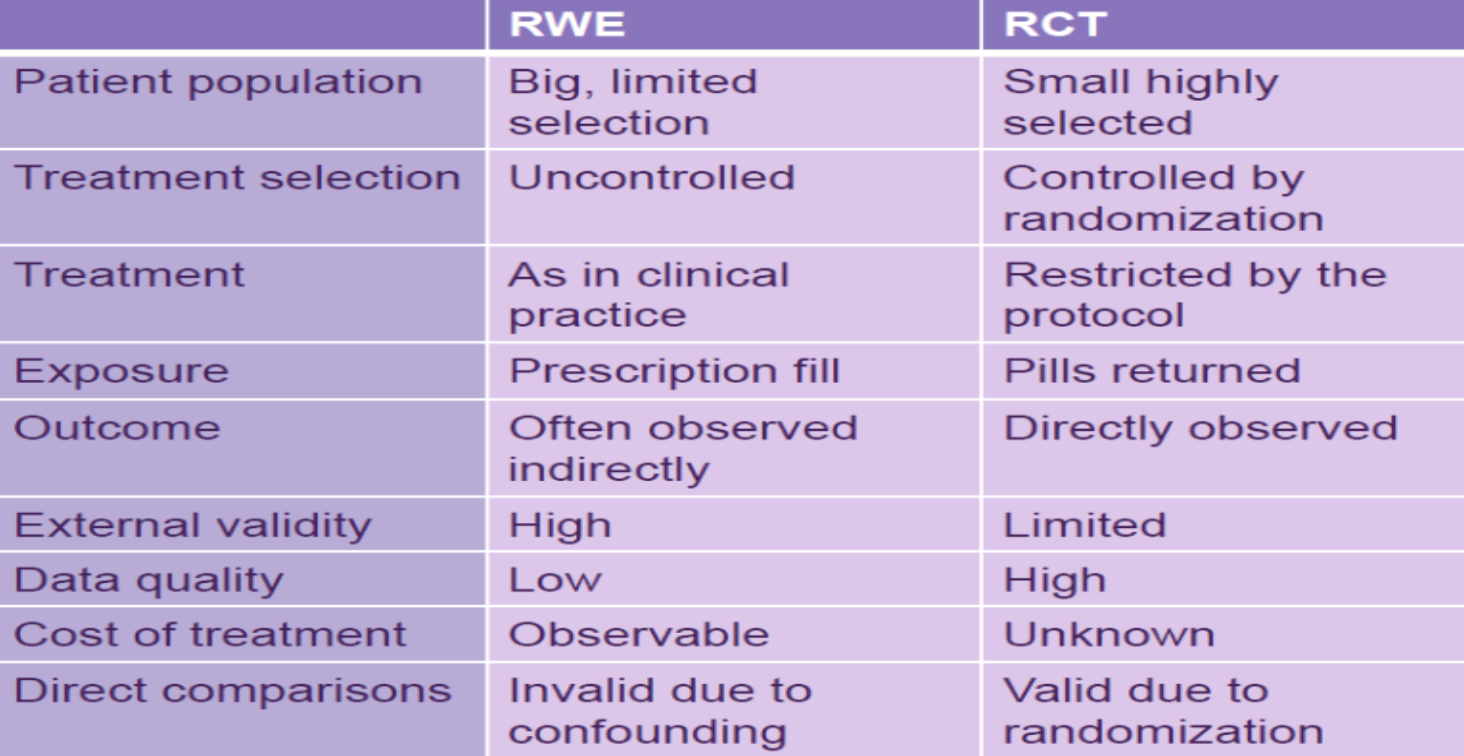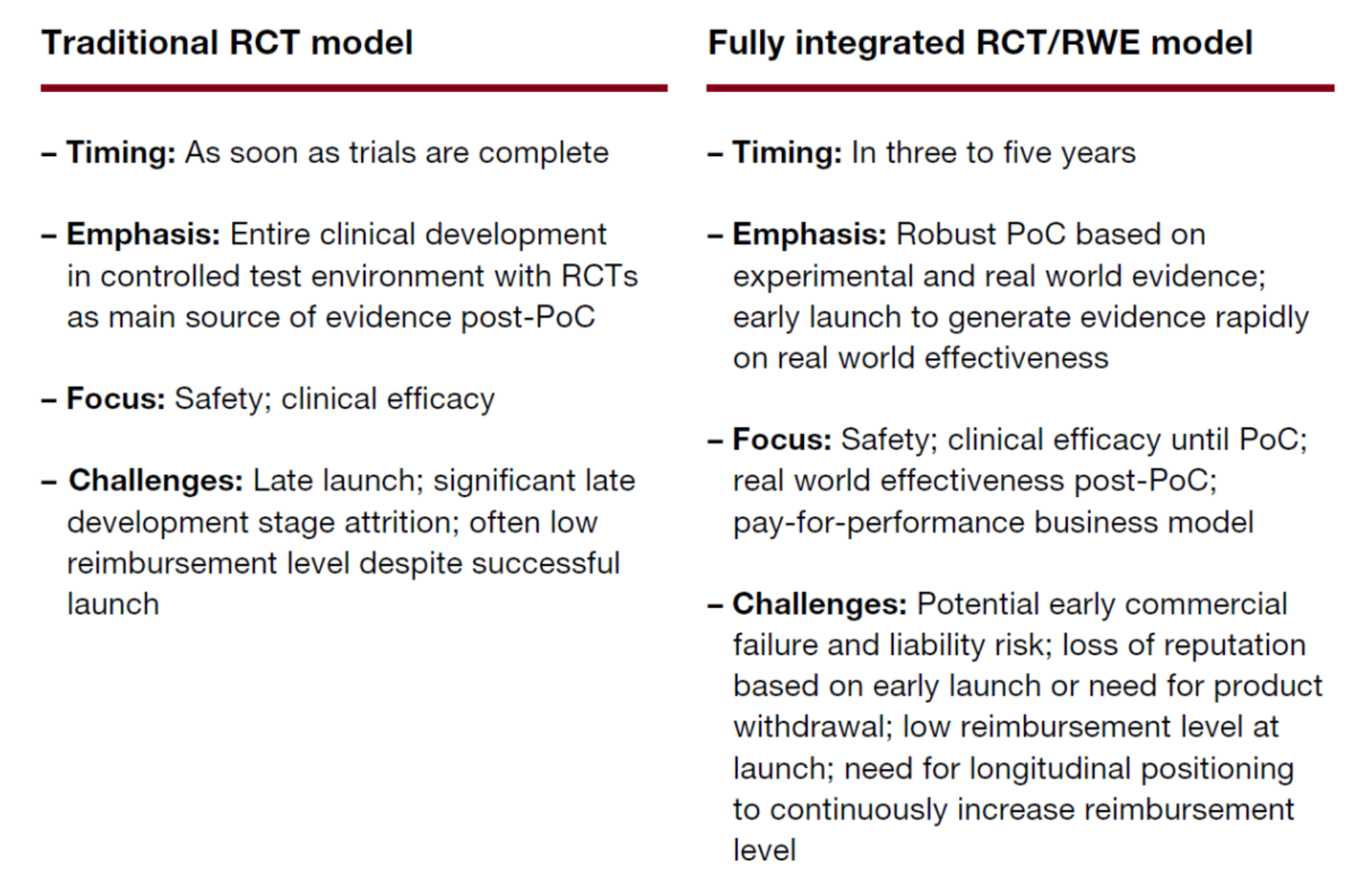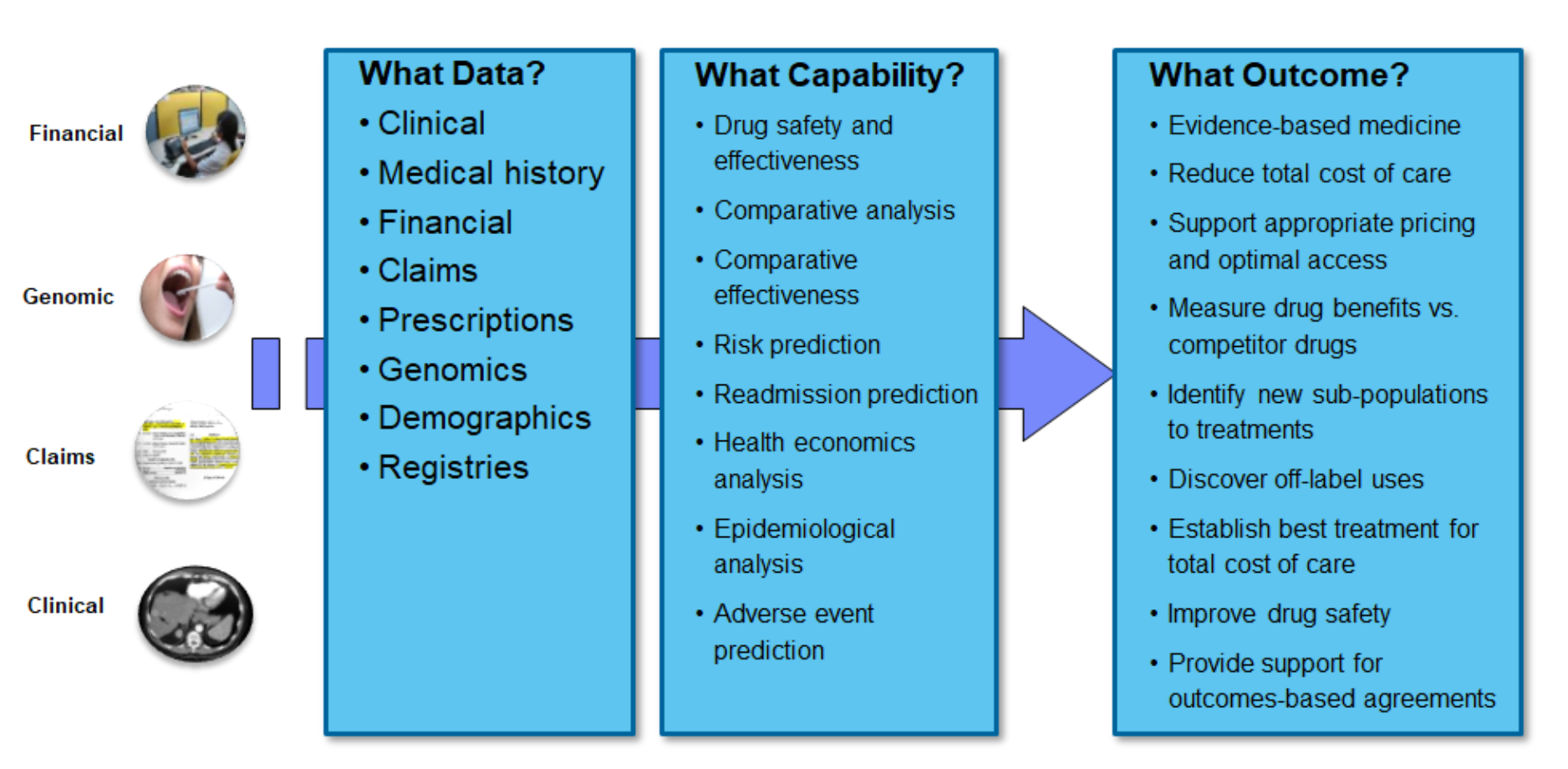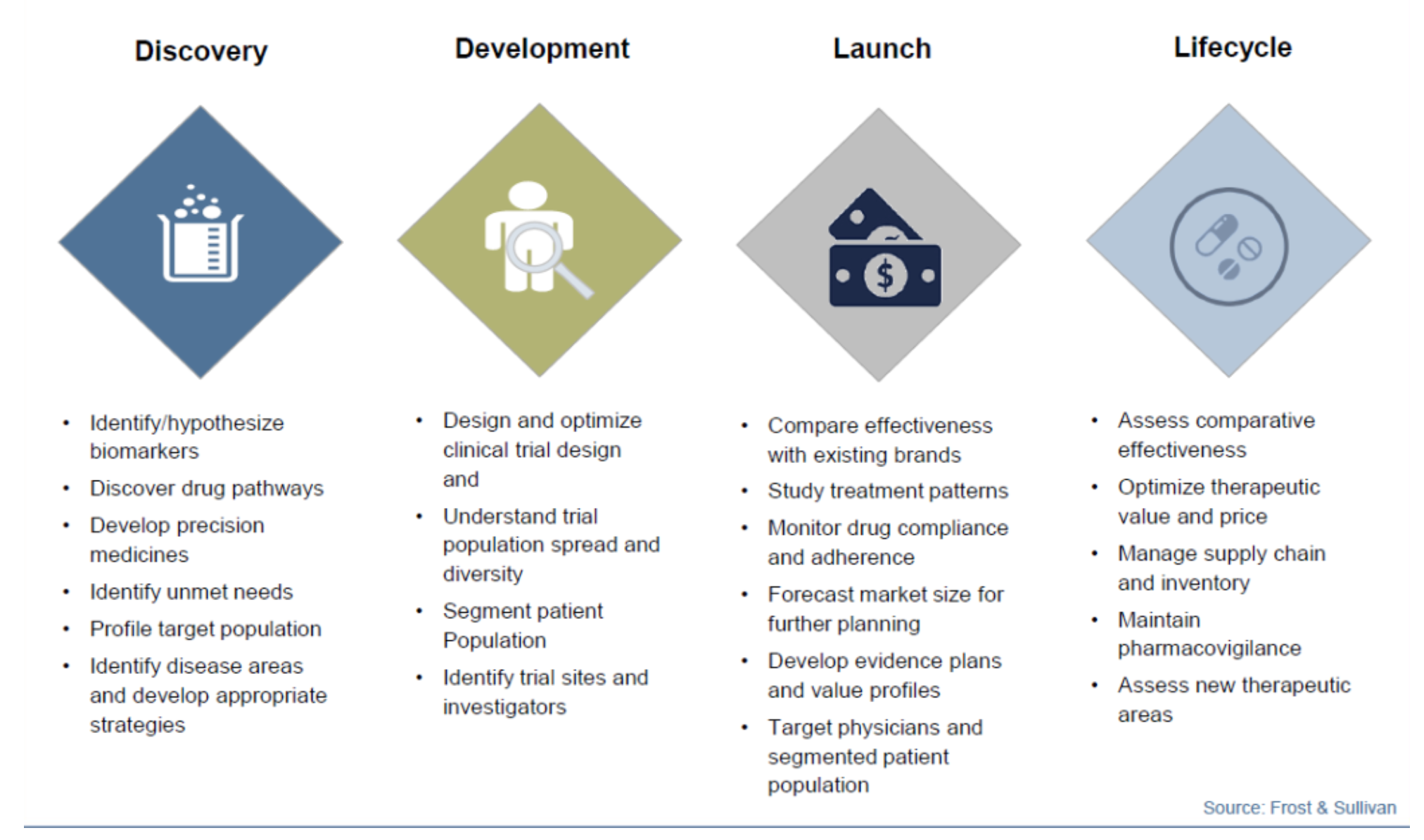Is There Evidence in Real-World Evidence?
The discrepancies between trial and real-life patient conditions are such that Real-World Evidence (RWE) can be utilized to supplement this process.
Partha S. Anbil

In traditional life sciences research, investigators are collecting data in a standardized and structured fashion from a selected and narrowly defined patient population. Patient data is collected during randomized controlled trials (RCT) that are designed to collect only pre-defined data types during a limited period. Clinical research has been conducted by this gold standard to study the safety and efficacy of medical treatments for regulatory and market authorization purposes for decades. This research approach, however, is very costly because 1) the actual cost of doing the study and 2) the opportunity cost of not having enough data to fully understand your molecule to help identify the most appropriate patients for the product. The discrepancies between trial and real-life patient conditions are such that Real-World Evidence (RWE) can be utilized to supplement this process.
RWE vs RCT
Figure 1 (Click to enlarge)

RWE refers to data and information gathered from a real-world setting, rather than being generated under controlled, clinical trial conditions. It encompasses diverse types of data, from a variety of sources. RWE may come from disease registries, insurers’ claims data, electronic medical records, or via pragmatic clinical trials, patient surveys, questionnaires, or observational studies.
What is the difference between RWD and RWE?
Figure 2

Figure 3 (Click to enlarge)

RWE is a vital component of proving, and creating, value. Payers, providers, and patients are focused on outcomes, and RWE is the language in which those outcomes are demonstrated. RWE is not just about market access: it is also key to more efficient R&D, to personalized medicines, and to better-targeted marketing.
The digitization of healthcare is making traditional real-world data (RWD) sources more reliable and accessible. It is also generating multiple new sources that may enhance, and perhaps in the future overshadow, first-generation data sources. Far more health data are now available electronically-as electronic medical or health records-and new analytics and visualization tools are providing greater access to data. Connected devices are generating new forms of real-time data that help fill the evidence gaps left by traditional RWD sources.
RWE has not, thus far, had a huge visible impact on drug formulary positioning, pricing, or uptake, but it is increasingly becoming, by necessity, the battleground for pharmaceutical firms operating in highly competitive therapy areas such as diabetes. RWE can help improve clinical practice and lead to more collaborative relationships with providers and other stakeholders and sits at the heart of payer-pharma outcomes-based reimbursement deals. RWE can also help pharma’s internal R&D productivity, by informing more efficient clinical trial design and recruitment, for example.
Yet many payers and health technology assessment agencies remain skeptical of RWE. Whereas RWE provides valuable insights, it still has limitations in terms of completeness, especially the electronic medical record. Missing data elements can impact robustness of findings-in part because standards and guidelines are lacking around how to interpret this large, heterogeneous evidence category. RWE generation still lacks defined methodological standards and a regulatory framework, but progress is being made. Several multi-stakeholder groups are pushing to define, categorize, and test how best to assess and use RWE, and regulators are starting to look at how to incorporate RWE into product assessments. Many integrated delivery networks (IDNs)are using RWE to benchmark performance. These IDNs are following the work of Kaiser, Cleveland Clinic, and others that have invested heavily into insights and performance measures from RWE.
Biopharma organizations may embrace RWE in an integrated, company-wide fashion. They may shift to a more data-focused mindset and partner in a flexible manner to access the skills and tools to make best use of RWE. Evidence planning for products must span discovery through launch. The business case for RWE investment for any product is still tricky to quantify, but the ability to generate, interpret, and act upon RWE will be critical in allowing pharma companies to remain leading players within an increasingly digitalized healthcare world.
RWE: Critical, but poorly understood
As the healthcare world shifts from volume-based payments to value-based payments, all stakeholders are focused on outcomes. RWE is the language in which those outcomes are demonstrated; as such, it is key to a more efficient, sustainable health system. RWE reflects how products are used and the effects they have in real-life clinical practice rather than in the highly controlled setting of a clinical trial.
RWE comes in a variety of forms from multiple, heterogeneous, and rapidly proliferating RWD sources (see figure below). It includes all information generated in routine medical practice: electronic health and medical records, claims data, pharmacy data, and clinical outcomes assessments, for example. It includes epidemiological data, registry data, health survey data, and data collected during observational trials and pragmatic studies, which are carried out post-approval to measure effectiveness.
Figure 4 (Click to enlarge)

An additional, far larger, and possibly more powerful sea of RWD-around individuals’ behaviors, physiology, and preferences-is being captured from social media, smartphones, wearables, and sensors. This explosion of “big data,” and the increasingly sophisticated machine-learning and artificial intelligence tools used to process and analyze it, further expand the prevalence and potential applications of RWD. Real-world evidence isn’t new. What’s new is the technological infrastructure, the data platforms, the increased volumes of data that we can now use to create rapid insights.
RWE has recently become a buzzword in the healthcare sector because of two concurrent (and related) forces: the unprecedented drive to lower costs while maintaining or improving outcomes, and an explosion of data and data collection technologies.
RWE is becoming a new standard for generating evidence and discovering medical insights from patients in their normal living environment. The data can be used in several ways by the life science and healthcare industry to generate insights about almost every kind of aspect of a patient journey. Examples of opportunities to leverage RWE are research & development, market access, epidemiology, sales operation, and safety surveillance. Moreover, the results can be used for optimization of trial recruitment, trial design, treatment analysis, predictive analysis, and comparative effectiveness research.
In the pharmaceutical industry, the overarching goal is to bring drugs and devices to market faster that improve health outcomes for patients. But what happens once those drugs are in the market and clinical trials conclude? RWE provides insights into how a drug is used and how it performs in the “real world” with all its variety of settings and circumstances.
In its first generation, RWE solutions had focus on safety and post-market data of drugs. However, in its second generation, RWE solutions became more integrated and it was being deployed to support regulatory decisions, advance disease understanding and clinical guidelines, and support outcomes-based reimbursement decisions.
Though these are challenging traditional operating models of pharma companies, to remain competitive and distinguished in a value-based, personalized healthcare system, these companies are expected to take benefits from end-to-end RWE services-which will provide large growth opportunity in the market.
Evidence from real-world practice and utilization-outside of clinical trials-is seen to tailor healthcare decision-making more closely to the characteristics of individual patients, and thus as a step towards making healthcare more personalized and effective. Robust RWE will not only tap increasing volumes of data, but weave together different sources of data, such as clinical data, genomic data, and socioeconomic data, to yield a better picture of individual patient characteristics and improve medicine’s ability to treat individual patient needs. Use large sets of post-market observational health data to gain insights into diseases, products, and patient populations, in areas such as health economics and outcomes research, drug effectiveness, drug safety, and pharmacoepidemiology.
Figure 5 (Click to enlarge)

And to do so, it is important that there should be standardization of methods by which these studies are being conducted. But, there are multiple standards and methods for conducting analyses with RWE. If the study is conducted poorly, misinterpretations and poor health outcomes for patients are possible-which is a major challenge being faced by this industry today.
However, efforts are being employed to identify best practices and standards for collecting and analyzing RWEs. For instance, The Comparative Effectiveness Research Collaborative-comprised of Academy of Managed Care Pharmacy, the International Society of Pharmacoeconomics and Outcomes Research (ISPOR), and NPC-has developed a questionnaire and online tool for this.
RWE in end-to-end evidence management
Real-world data has been used for years in health economic and other observational contexts. However, with the proliferation of digital and electronic health care data, we are entering a new era of RWE where organizations can use RWD to answer the “challenging questions” in health care-what works, for whom, in what context, and at what cost. Increasingly, data and evidence are generated and used for multiple purposes across biopharmaceutical organizations-from drug discovery all the way through commercialization.
An end-to-end (E2E) evidence management strategy breaks down the traditional evidence silos using platforms and processes to access data and knowledge assets across the organization to support data-driven decision-making. By adopting E2E evidence management strategies, companies can use RWE to discover, generate, and optimize product value (Figure 3). This could not only enhance research productivity and assessment of drug effectiveness but also support pricing, customer engagement, and marketing. As a result, companies should consider making digital patient engagement strategies a critical component of end-to-end evidence-generation. Many leading biopharma companies are beginning to link their digital initiatives with their data and analytics objectives.
Eventually, E2E evidence management strategies could enable companies to create compelling value stories and digital engagement strategies for each of their therapies. This, in turn, can enable more meaningful conversations with customers and other stakeholders. Crafting and implementing such strategies, however, will likely require companies to assess and re-align their current infrastructure, governance, operating models, people, and processes. While this may be complex, time-consuming, and resource-intensive, the efficiency, innovation, and commercial benefits they offer may justify the investment.
Applications across the pharmaceutical chain
It is possible to use real world data across the pharmaceutical value chain at an enterprise level; however, adoption across the value chain has not been the same.
Figure 6 (Click to enlarge)

Conceptual framework to guide optimal development and use of RWE for coverage and formulary decisions
RWE promises to transform patient outcomes, but it also threatens to upend long-established norms in the generation and use of healthcare evidence. RWE challenges the traditional paradigm in which the only authoritative medical evidence is generated through prospective RCTs, validated through peer-reviewed publication in reputable journals, and incorporated into broadly applied clinical practice guidelines. Few experts believe that RWE will supplant the prospective RCT; yet, appropriate adoption of RWE by sponsors of new drugs, devices, and regulators could streamline or supplement data from RCTs. RWE is already generating new forms of evidence that many decision makers want to consider alongside traditional RCT evidence. Indeed, prospective trials that analyze RWD alongside classic RCT data are emerging as an important complement to RCTs. While manufacturers will likely remain the dominant sponsors of RCTs for new medicines and devices, the proliferation of new data sources and new methods is enabling many more stakeholders to generate evidence and assert their own recommendations on the adoption, coverage, reimbursement, and use of products.
Numerous barriers impede the full realization of benefit from RWE:
- Data quality: Most sources of RWD are not collected for research purposes. Many researchers become “data janitors,” forced to clean gaps and inconsistencies in data through methods that may not yet have wide acceptance for statistical validity.
- Cost: While the cost of collecting and maintaining data may be an established cost of doing business for manufacturers (clinical trial and outcomes data) and payers (claims data), financial models for data maintained by other stakeholders (patient groups, professional societies, providers) are much less certain, particularly to the extent they rely on government funding.
- Patient protection: Repeated data breaches in the healthcare industry undermine patient confidence in data privacy, and thus the political will to support investments that support RWE development and use among all stakeholders. Meanwhile, there is little settled law or regulation on when and how often patients must give consent for use of their data.
- Disparate rules on stakeholders: FDA-regulated entities, like pharmaceutical and medical device firms, are generally prohibited from making claims or commenting on uses of their products that are not part of FDA-approved labeling and not supported by evidence from RCTs. Other stakeholders with access to big data, like insurers and providers, do not face similar restrictions. RWE from disparate sources needs to be developed and evaluated in an open transparent manner by all stakeholders.
- A challenge to traditional peer review and publication: As RWD sources proliferate, so does the ability of stakeholders to generate “do-it-yourself” RWE. The pace at which RWE is generated may surpass the pace at which conventional studies are typically released. This represents a huge force for valuable innovation, but it also challenges the traditional paradigm in which consensus on valid medical evidence is developed through peer-reviewed publications.
Partha S. Anbil is a Cognitive Enterprise Transformation Leader. IBM Healthcare & Life Sciences Practice partha.anbil@ibm.com
Addressing Disparities in Psoriasis Trials: Takeda's Strategies for Inclusivity in Clinical Research
April 14th 2025LaShell Robinson, Head of Global Feasibility and Trial Equity at Takeda, speaks about the company's strategies to engage patients in underrepresented populations in its phase III psoriasis trials.
Beyond the Prescription: Pharma's Role in Digital Health Conversations
April 1st 2025Join us for an insightful conversation with Jennifer Harakal, Head of Regulatory Affairs at Canopy Life Sciences, as we unpack the evolving intersection of social media and healthcare decisions. Discover how pharmaceutical companies can navigate regulatory challenges while meaningfully engaging with consumers in digital spaces. Jennifer shares expert strategies for responsible marketing, working with influencers, and creating educational content that bridges the gap between patients and healthcare providers. A must-listen for pharma marketers looking to build trust and compliance in today's social media landscape.